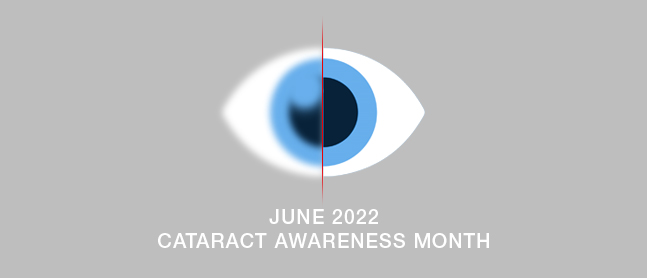About half of all Australians aged over 50 have some form of cataract, and by the age of 80, almost everyone develops cataracts. Globally, cataracts are the leading cause of blindness. Although genetics, sunlight exposure, smoking, diabetes and other factors may influence the development of cataracts, ageing is the most common cause.
What Are Cataracts?
A cataract occurs when your eye’s natural lens becomes cloudy. Proteins in your lens break down, which can make images appear blurry, hazy, or less colourful. This cloudiness prevents light from reaching the retina and can distort the formation of clear images. Cataracts are usually associated with ageing.
Cataract Symptoms
- Cloudy, foggy or fuzzy vision in the distance or when reading
- Distortion of colours (e.g. bright colours become dull)
- Difficultly driving, especially at night
- Sensitivity to bright sunlight or glare
- Frequent changes in glasses prescription (e.g. becoming more short-sighted)
Many people with cataracts find that their glasses become less helpful over time. Changes to the prescription may not provide the same clarity of vision as before.
Cataract Causes
Ageing is the most common cause of cataracts, as natural changes occur in the eye after age 40. Normal proteins in the lens start to break down and can cause cloudiness. Other causes include genetics, sunlight exposure, smoking, some medical conditions such as diabetes, eye injury or previous surgery, radiation treatments, and certain medications.
Most age-related cataracts develop gradually. However, in some cases—such as in people with diabetes—they may progress more quickly. It is difficult to predict how fast a cataract will develop.
Cataract Treatments
If your cataract symptoms are not affecting your daily activities, you may not need surgery immediately. A new eyeglass prescription may be helpful. Surgery may be considered when cataracts start to interfere with your daily life or preferred activities.
Cataracts can only be removed with surgery. During cataract surgery, the eye’s cloudy natural lens is removed and replaced with an artificial lens called an intraocular lens (IOL). Your eye surgeon will discuss the different IOL options with you and answer any questions you may have.
Cataract surgery is one of the most common procedures performed worldwide. Advances in surgical techniques and IOL technology have allowed many patients to experience improved vision and, in some cases, a reduced need for glasses. Individual results can vary.
As with any surgery, eye surgery carries risks of possible complications and side-effects.
Please note, you will need a current referral from your optometrist or GP for cataract assessment at Vista Eyes Laser Eye Clinic.
Sources:
www.aao.org
www.healthdirect.gov.au
Click here for more information on Cataract Surgery.
*This information is general in nature. All medical and surgical procedures have potential benefits and risks. Consult your ophthalmologist for specific medical advice.
